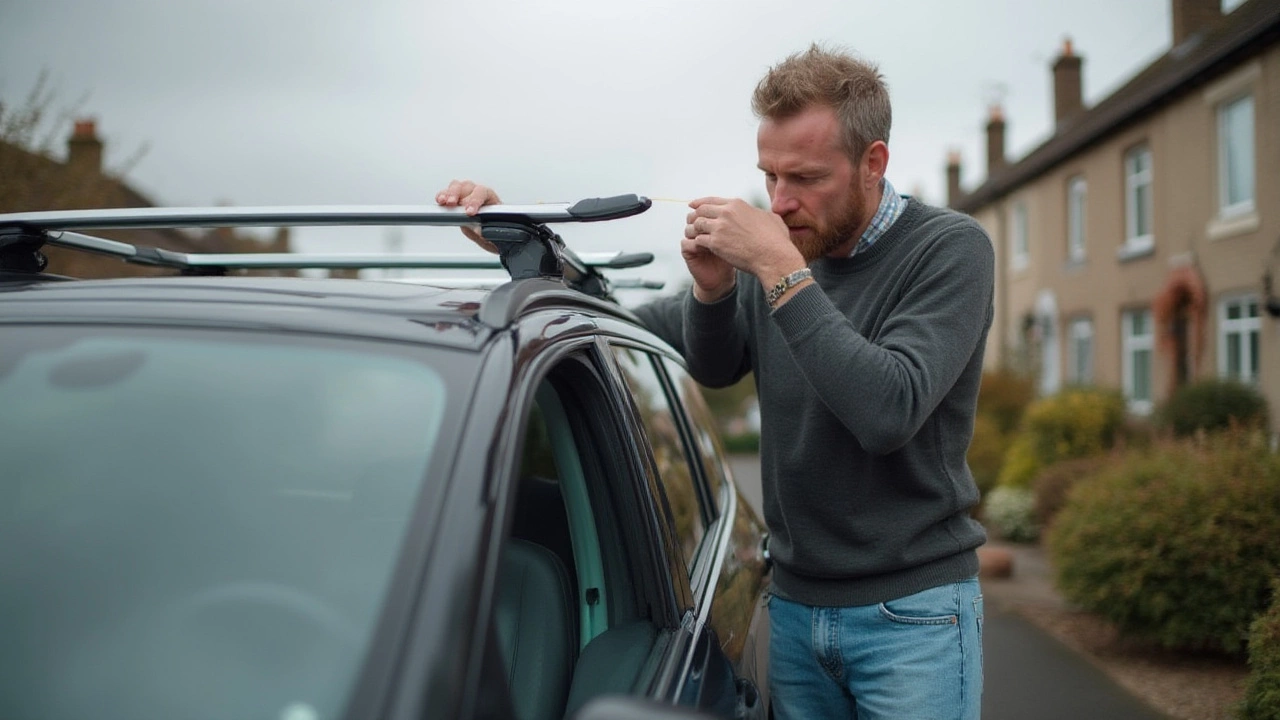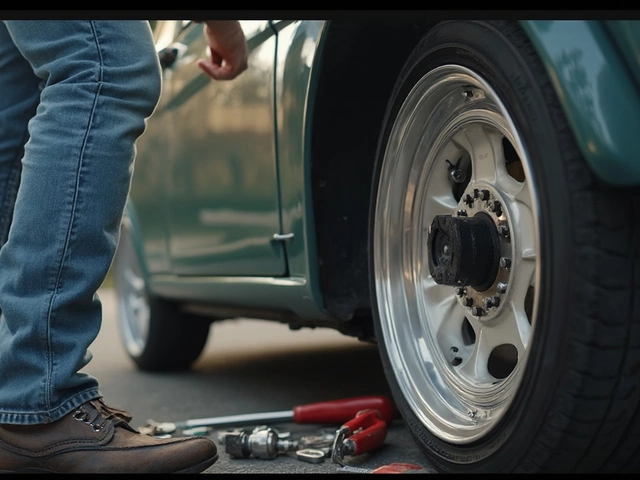Imagine this: it’s the start of a classic Aussie road trip season, and you’re gearing up for the Great Ocean Road. You’ve stacked your bags, a couple of surfboards are waiting, and you realise your sedan just won’t cut it for cargo space. Roof rack time, right? But wait—could plonking a roof rack on your car get you into hot water with your insurer, or could it be a ticking legal time bomb you never saw coming?
What is Considered a Car Modification?
Let’s clear up what actually counts as a ‘car modification.’ Some folks reckon it’s just engine tunes or tricked-out rims, but the reality is more of a spectrum. In Aussie automotive lingo, a modification is almost any change from the way your car rolled out of the factory. That includes fitting aftermarket parts or shifting how the vehicle looks and behaves. Even adding stickers or swapping your gear knob might come under scrutiny in strict interpretations, depending on which state or territory you’re in.
But here’s the twist—not every add-on is a modification that throws up red flags with the law or your insurer. Some things, like basic roof racks, floor mats, or dash cams, squeak into the accessories camp instead. These usually aren’t permanent, can be removed, and don’t require hacking into the vehicle’s structure or electronics. That said, Australia’s state-based rules differ quite a bit. For example, VicRoads describes a modification as any change affecting your car’s performance, emissions, or structural integrity, but their site clearly spells out that roof racks and luggage carriers are viewed as accessories and not modifications—as long as you’re using the car manufacturer’s approved type or a universal product fitted as intended.
Fancy facts? If your car ends up in a smash—and you’ve gone and fit bull bars, spotlights, or a chunky roof rack—your insurer could get sticky if you never let them know about these extras. The logic: unreported changes could alter the car’s risk profile or repair costs. Back in 2022, a study from Comparethemarket.com.au polled Australian drivers and found nearly 1 in 3 had installed roof racks or similar accessories without telling their insurer, mostly because “it seemed minor.” But the fine print counts—especially if things go pear-shaped after an accident or theft.
So yes, adding a roof rack can be either an innocent accessory or a notifiable modification, depending on:
- How it’s attached (bolt-on, clamp-on, or permanent fix?)
- If it requires drilling or vehicle body cutting
- Whether it changes the total height of your car beyond legal limits
- If it’s sticking out wider than the legal width allowances
- Whether it impacts your car’s safety features (think airbags or sensors)
- If it exceeds the manufacturer’s roof load ratings
Bottom line: If you buy a branded roof rack designed for your model and follow installation instructions—no dodgy DIY hacks—most regs and insurers don’t consider it a serious mod. Go rogue, and you might as well start making a spreadsheet for compliance headaches.

Insurance and Registration: What You Need to Know
This is where things get interesting. Loads of Aussies add roof racks and never give it a second thought, but insurance companies? They love knowing every tweak you make, no matter how minor. Most basic policies list car modifications and accessories as separate things. Accessories tend to mean add-ons like tow bars, boot liners, roof racks, and roof boxes, with some companies automatically covering these up to a certain value. But notify your insurer when you add anything—yes, even a roof rack—because not all policies treat them the same way. The devil is always in the detail.
Here’s a trap many fall into: you install a beefy adventure-style roof rack, then whack on a rooftop tent or cargo pod. Suddenly, your rack’s not just a rack—it’s a structural thing carrying serious weight. If that weight exceeds your vehicle’s approved ‘roof load,’ you’re actually breaching your manufacturer’s recommendations. If the roof rack setup physically raises the overall height of your vehicle to levels classified as a modification in your state (think: over 2.5 metres total height for a 4WD), you might need to report it when you renew your registration or during roadworthy checks.
Still not convinced? According to NRMA data, their comprehensive car insurance policy lists roof racks under accessories and will usually cover them, provided you declared them upfront. Some other providers lump roof racks and spotlights into the accessories basket too, but there’s a catch with aftermarket jobs or custom builds. That’s where declaring modifications becomes non-negotiable—mostly because they affect risk (like heavier roof racks potentially leading to rollovers or impacting crumple zones in a smash).
Let’s crunch some relatable numbers:
| Accessory/Modification | Notify Your Insurer? | Requires Engineer Approval? | Impacts Rego? |
|---|---|---|---|
| Factory-fitted Roof Rack | Yes | No | No |
| Aftermarket Roof Rack (Removable) | Yes | No (if installed per instructions) | No |
| Permanent Roof Rack (Requires Drilling/Cutting) | Yes | Maybe (depends on changes) | Maybe |
| Cargo Pod/Tent (on roof rack) | Yes | No | If height exceeds limit, yes |
Got kids heading back to uni or planning a ski trip? Always check your car’s owner manual or the manufacturer’s website for roof load limits. Usually, passenger cars average a dynamic roof load of 50–100kg—including the rack weight itself. Go over this, and you risk busting your insurance cover, even if you did everything else by the book. I once saw a poor bloke at a Thredbo carpark with his entire roof tent setup caved in after a heavy snow—the insurance wrangling took months because the load limits weren’t checked.
Registration in most Australian states doesn’t require you to report a roof rack, unless it’s part of a major bodywork change, impacts height, or interferes with safety features. Still, it pays to keep photos and receipts handy, especially if your rack is anything more elaborate than rails clipped on. It also speeds up any insurance claims for theft or damage to your rack—or the precious cargo on top.

Tips for Fitting and Using Roof Racks Legally and Safely
This is where it gets practical—because navigating government websites and insurance paperwork can fry your brain quicker than a February heatwave in Melbourne. First rule: always stick to the exact instructions that come with your roof rack. If you have to drill a hole or snip any bodywork, double check if you’re nudging into mod territory. Some states like Queensland and NSW require an engineer’s sign-off for anything tampering with structural parts. More reason to keep things simple and stick to approved kits.
Here’s a checklist to stay out of trouble and make sure the rack does its job:
- Buy racks that exactly match your car model—not just ‘close enough’. Universal isn’t always universal.
- Stick to your car’s rated dynamic roof load, and remember: the rack itself usually weighs 5 to 15kg or more.
- If you’re mounting bikes, boards, or roof boxes, distribute weight as even as possible and secure everything tightly. Nothing ruins a road trip faster than losing a kayak on the Hume Freeway.
- Double-check total height if your rack (and its load) will take you into multi-story car parks or low-clearance tunnels. This is a classic Melbourne mistake, especially with SUV racks—parking stations love to eat roof gear.
- Remove racks when you aren’t using them. They create drag, drop your fuel efficiency by up to 15% (true story—tested by the RACV), and are magnets for low-hanging tree branches.
- If the rack is ever damaged or starts wobbling, replace or repair immediately. Any movement in transit is bad news.
Installing a roof rack isn’t a free pass to haul mattress mountains or rival Santa’s sleigh, either. Each Australian state has clear rules about loads sticking out from the car. They can’t be wider than the side mirrors or longer than 1.2 metres forward of the front edge. And remember, you can get fined or pinged points for unsecured loads that become road hazards.
Want to geek out with a tip? Keep a cheap tape measure in your glovebox – after all, you forget how much taller the car gets with the rack on, especially when pulling into those sneaky airport parking structures. Happens to the best of us. I once clipped the drive-through roof at a fast food stop north of the city—Emily still gives me grief about it when we pass that spot. Max, our dog, hated the sudden thud and barked his head off. Trust me, never again.
You can also check with car clubs (like the RACV or local 4WD clubs), as they often publish up-to-date guides on legal mods and accessory use. Don’t trust just the forum banter; regulations change from year to year. In 2024, for example, the NSW government clarified rules making boot-mounted bike racks easier for compliance but kept the same stance for roof racks: if fitted per manufacturer advice and within weight and size limits, you’re fine.
Long story short, roof racks are the unsung hero of car accessories—but treat them properly and stay transparent with your insurer (yes, even if it feels annoying). You’ll save yourself stress, fines, and headaches, and you’ll probably keep your next road trip with the family drama-free. Above all, keep those epic Australian drives rolling—just make sure what’s strapped to your roof isn’t going to cost you more than a few litres of juice at the servo.




